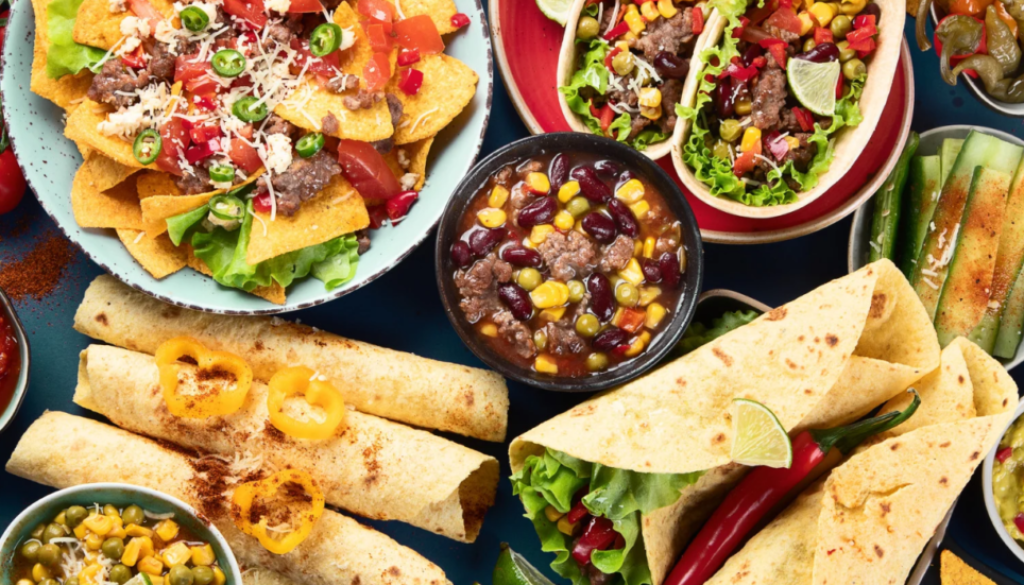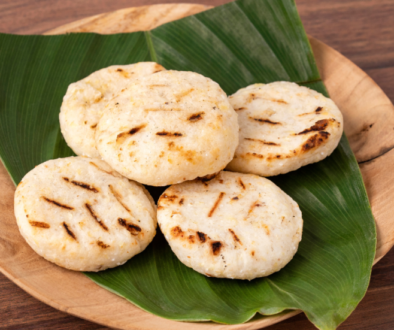Savory Escapade: A Culinary Tour of Mexico’s Regional Delicacies
Mexico, a tapestry of flavors and textures, is a paradise for any self-proclaimed foodie or excursionist seeking a taste of the world’s famed culinary diversity. From sun-kissed beaches to the heights of the Sierra Madre mountains, the gastronomic tableau of Mexico is as vibrant and varied as its geographical features. In this delectable tour, we’ll savor the must-try dishes of each region, sample street food that captures the essence of local life, and raise a toast with traditional Mexican libations. Whether you’re planning a visit or simply dreaming of one, fasten your seatbelt – we’re about to explore the edible delights of Mexico.
The Gastronomic Feast Awaits!
Mexico’s culinary tapestry is a reflection of its rich history and the fusion of indigenous Mesoamerican, Spanish, and other European influences. Each region offers a different signature dish, often celebrated in intricate festivals and vibrant street fairs.
Central Mexico – The Heart of Culinary Traditions
Found at the heart of Mexico, this region boasts culinary delights that are a mix of pre-Hispanic cuisine and colonial-era flavors. It’s the birthplace of some of the most iconic Mexican dishes such as:
- Pozole: A traditional soup made with hominy corn and meat, either pork or chicken, usually accompanied by lettuce, radishes, onion, lime, oregano, and chili.
- Tacos al Pastor: A staple of Mexico City, these are marinated pork tacos cooked on a spit similar to shawarma.
- Chiles en Nogada: A dish typically prepared in the state of Puebla, this consists of poblano chilis stuffed with picadillo (a mixture of shredded meat, fruits, and spices) topped with a walnut-based cream sauce, pomegranate seeds, and parsley, representing the colors of the Mexican flag – green, white, and red.
Northern Mexico – A Land of Charred Delights
The northern region’s arid climate and cowboy culture have greatly influenced its cuisine, which centers around hearty meat dishes and flavorful salsas, such as:
- Carne Asada: A joyful union of grilled meat, usually beef, and an assortment of salsas and guacamole, commonly devoured in tortillas.
- Cabrito: A festive dish featuring young goat, cooked until tender, is a favorite of the city of Monterrey and its surrounding areas.
- Tostadas de Mariscos: Typically found along the Baja California peninsula, these are corn tortillas fried until crisp and topped with a mix of seafood, lime juice, chili, and a splash of crema.
Southern Mexico – The Spicy Essence of the Maya
The Yucatan and Oaxaca regions are known for their spicy, complex flavors that have Maya roots and show the impact of Afro-Caribbean and Haitian components:
- Cochinita Pibil: A marinated pork dish cooked in a banana leaf, originating from the Yucatan Peninsula and notably rich in achiote spice.
- Mole: Known for its many varieties, black mole from Oaxaca is a complex sauce made with a multitude of ingredients, including chocolate, and often served with turkey.
- Tlayudas: A larger, thin, crunchy tortilla covered with a spread of refried beans, asiento, which is unrefined pork lard, lettuce or cabbage, avocado, meat, Oaxaca cheese, and salsa.
Where to Taste Authentic Mexican Flavors
Your sensory exploration is not complete without a list of venues where the authenticity of Mexican dining comes to life. Here’s where to find the genuine article:
Street Food Heaven – Mexico’s Antojitos
In Mexico, antojitos (literally “little cravings”) are more than snacks – they’re a way of life. Traditional street vendors, or ‘antojeros’, serve up some of the best dishes, and every town has its speciality:
- Cemitas in Puebla: Delight in the taste of a cemita, a type of sandwich originally from Puebla made with a bread roll called a cemita, avocados, meat, cheese, onions, and sliced papalo leaves.
- Elote in Mexico City: Melted butter, chili powder, and cheese all over a hot piece of corn on the cob – a true taste of the capital’s streets.
- Tamales in Oaxaca: These consist of masa (a starchy dough, usually corn-based), which is steamed or boiled in a leaf wrapper. They can come filled with meats, cheeses, fruits, chilies, and more.
Local Mercados – The Beating Heart of Mexican Cuisine
Markets are a pivotal part of the Mexican culinary scene. Here, the freshest ingredients can be found, and many markets have eateries dedicated to showcasing local specialties:
- Mercado de San Juan, Mexico City: A paradise of exotic meats and gourmet delicacies, this market is a must-visit for any food enthusiast.
- 20 de Noviembre Market, Oaxaca: Renowned for its Oaxacan cuisine, this bustling market invites you to sample local foods like chapulines (grasshoppers), tlayudas, and an array of moles.
- Lucas de Galvez Market, Merida: This vibrant market in the Yucatán’s capital offers an opportunity to savor cochinita pibil, between browsing the crafts, spices, and other local goods.
Hidden Gem Restaurants – Culinary Artisans
In a country famed for its food, world-class chefs and mom-and-pop kitchens alike cook up memorable meals:
- Pujol, Mexico City: Chef Enrique Olvera’s flagship restaurant, known for its modern Mexican cuisine and reinvented classics.
- El Bajío, Mexico City: Specializing in traditional Mexican comfort food, this restaurant is perfect for a sampling of dishes from across the nation.
- La Chaya Maya, Merida: Renowned for its Yucatecan dishes, this restaurant presents a feast of flavors, with staff often dressed in traditional outfits.
The Liquid Side of Mexico – Traditional Drinks
No culinary exploration is complete without indulging in Mexico’s beloved libations, each a unique expression of the country’s culture:
- Tequila and Mezcal: Mexico’s legendary distilled beverages are steeped in tradition and agave. While tequila is famous globally, Mezcal offers a smokier and earthier alternative, typically enjoyed in its Mezcaleria.
- Horchata: A sweet rice milk-based drink, sometimes enhanced with vanilla and cinnamon, provides a refreshing touch to spicy food, especially in the Yucatán.
- Mexican Beer: Craft beer is taking off in Mexico, but classics like Corona, Modelo, and Pacifico remain popular staples best savored with a squeeze of lime.
A Taste of Culture – The Significance of Mexican Food
Food in Mexican culture is much more than sustenance – it’s a way of conveying love, tradition, and a sense of community. It’s also closely linked to the country’s rich religious and seasonal celebrations:
- Dia de los Muertos: This ‘Day of the Dead’ festival features an assortment of foods, including tamales, pan de muerto (day of the dead bread), and sweets in the shape of skulls or skeletons.
- Fiestas Patrias: During Mexico’s Independence Day celebrations, the streets fill with the fragrance of traditional dishes like chiles en nogada and pozole.
- Las Posadas: The nine-day celebration leading up to Christmas Eve involves making and sharing dishes such as ponche (fruit punch) and tamales, which have become part of Christmas traditions beyond Mexico.
From the Fork to the Page – Mexican Cookbooks and Resources
For those willing to bring a bit of Mexico into their kitchen at home, these resources and cookbooks offer a chance to recreate the magic:
- “Mexico: The Cookbook” by Margarita Carrillo Arronte: A comprehensive collection of recipes from every region, including step-by-step instructions and insights into each dish.
- “Oaxaca: La Cocina de Los Valles” by Silvana Villegas: A deep-dive into the artisanal cuisine of the Valles Centrales in Oaxaca, highlighting the state’s rich culinary heritage.
- “Gran Cocina Latina” by Maricel E. Presilla: Though not exclusively focused on Mexico, this cookbook offers a broad spectrum of Latin American cuisine, including many Mexican recipes.
Practical Advice – Enjoying Mexican Cuisine Safely and Respectfully
Cuisine culture has its rules. Here’s what to bear in mind when on your Mexican culinary adventure:
- Hygiene and Water: Stick to sealed bottled water and be mindful when consuming street food. Aim for busy vendors with high turnover.
- Eating Etiquette: If dining with Mexicans, it’s customary to wait for a host to start eating. Use utensils rather than fingers, unless it’s customary for the specific food.
- Seasonal Sensibilities: Certain foods are best consumed when they are in season, such as the pomegranates for chiles en nogada during the late summer and early fall.
The Unforgettable Experience Awaits
A trip to Mexico is a sensory feast, and its food scene will leave your taste buds dancing. From the bustling markets to the tranquil back streets, the country offers a symphony of flavors waiting to be explored. Whether you’re sampling the succulent delights of the Yucatán or indulging in a seven-course feast in Mexico City, the nation’s true magic lies in its culinary culture – so delicious and diverse, it must be experienced to be believed. Start planning your next adventure or head straight to your local Mexican restaurant for a taste of the delights this land has to offer. Don’t forget to try it all, from the classics to the less-known – in the end, every bite is a piece of Mexico’s heart and history. Buen provecho!



